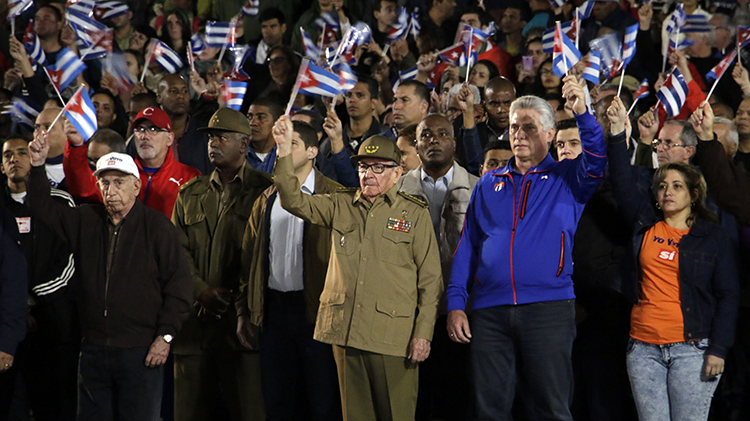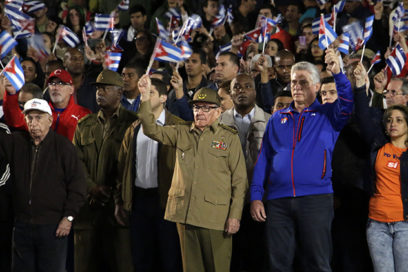On a night full of symbolisms referring to the continuity of the Cuban revolutionary process, thousands of university students from Havana remembered the March of the Torches, in homage to José Martí, as did the members of the Centennial Generation on January 28, 1953.

At the head of the parade, Army General Raúl Castro, First Secretary of the Communist Party of Cuba, Miguel Díaz-Canel, President of the Councils of State and Ministers and José Ramón Machado Ventura, Second Secretary of the Party, whose common march evidences the continuity of the principles of the Revolution in the new leadership.
This is the generation of continuity and it is here to fulfill its responsibility in history, said Raúl Alejandro Palmero, president of the University Student Federation (FEU), in the words that mark the beginning of the March that had as its starting point the steps of the University of Havana.
The main streets San Lázaro and Infanta did not need artificial light for their illumination due to the presence of the tens of thousands of torches carried by young students, university students, professionals, workers, the people in general, and along with them participants of the first March called by the FEU in January 1953.
This year the pilgrimage had a different nuance, due to the powerful tornado that on Sunday night hit part of the Cuban capital; that is why, in addition to constituting a show of support for Venezuela and the new Constitution of Cuba, which will be voted in a referendum next February, the March was in solidarity with the victims of the disaster.
Since 7:00 p.m. on Monday night, nearly 30,000 people have gathered little by little on the university hill. With slogans and strident slogans, ¡Viva Fidel!
The young Inti García carried on his shoulders a six-year-old girl who did not want to miss the March. According to his father, the girl is always a voluntary participant, and it is a way he has found to instill in her the principles of the Cuban Revolution and the legacy of the most universal of Cubans.
Alejandra, at her young age, recites Marti’s verses, and knows of that sincere, courageous man who loved children so much.
Fremiot de la Torre, of the University of the Arts, told the Cuban News Agency that the March, more than a tradition, is an example of the devotion of Cubans for their nation, of resistance, of the desire of the youth to give continuity to the revolutionary process and to defend the conquests.
We have always been a people that has struggled to prevail; in spite of all the problems, of the external influence, it always goes forward,» he said.
Manuel Masó, a pre-university student, said that from 6 p.m. he was on the historic staircase, ready to light his torch and thus contribute to the preservation of Martí’s legacy.
Margarita Fernández, retired, expressed that participating in the pilgrimage is a sign of support for the Constitution and a good opportunity to ratify the Yes next February. (Taken from Cuban News Agency)


